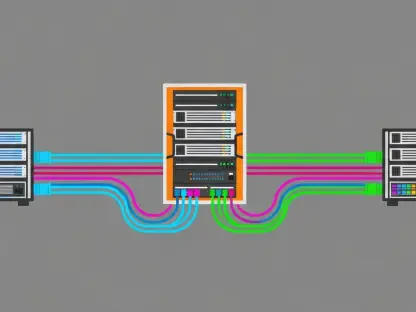The education sector is undergoing a significant transformation, driven by the rapid adoption of big data analytics. As of 2020, the global market for big data analytics in education was valued at $13.58 billion and is projected to reach $57.14 billion by 2030, with an anticipated Compound Annual Growth Rate (CAGR) of 15.3%. This substantial growth rate underscores the ascending importance of big data analytics in transforming the education industry.
The Power of Big Data in Education
Enhancing Decision-Making Processes
Big data analytics leverages vast datasets to extract insightful data such as market trends, customer preferences, hidden patterns, and unknown facts that enhance decision-making processes. In the context of education, the analysis of huge datasets offers a multitude of benefits, which include improved administrative functions, cost reduction, and enhanced educational outcomes. Educational institutions can make data-driven decisions, improving several aspects ranging from administrative operations to personalized learning experiences. By analyzing student performance data, institutions can identify trends and patterns that inform teaching strategies, curriculum development, and resource allocation.
Moreover, big data analytics enables educators to evaluate the effectiveness of educational programs and interventions. By examining data from various sources, including student assessments, attendance records, and engagement metrics, institutions can determine what works and what doesn’t, continuously refining their approaches to maximize educational outcomes. This iterative process helps create a more responsive and dynamic educational environment that can adapt to the needs of students and educators alike.
Internet Penetration and Digital Tools
The increase in internet penetration further fuels this trend by making digital tools and resources more accessible to a broader range of educational institutions. Improved connectivity allows for the seamless integration of big data analytics into everyday educational practices, enabling real-time data collection and analysis. The widespread availability of digital devices, such as smartphones and tablets, also contributes to the growing use of data analytics in education, as these devices facilitate the collection of data from various sources.
The demand for enhanced administrative services is another crucial driver of this market. Schools, colleges, and universities are increasingly looking to optimize their operations and reduce costs. Big data analytics offers solutions that streamline administrative processes, manage resources efficiently, and improve overall institutional performance. By analyzing operational data, educational institutions can identify inefficiencies and implement strategies to enhance productivity and reduce waste. This data-driven approach to administration helps institutions operate more effectively within tight budgetary constraints.
Drivers of Market Growth
Cost Reduction and Efficiency
Cost reduction is particularly significant in the education sector, which often operates within tight budgetary constraints. Big data analytics enables educational institutions to identify areas where they can cut costs without compromising the quality of education. By analyzing data on resource utilization, institutions can make informed decisions about where to allocate funds, leading to more efficient use of resources. For example, data analytics can reveal patterns in textbook usage, allowing schools to purchase only the materials that are most needed, thereby reducing unnecessary expenditures.
Furthermore, big data analytics can improve energy management and reduce utility costs in educational institutions. By monitoring and analyzing energy consumption patterns, institutions can identify opportunities for reducing energy usage and optimizing their infrastructure. In addition, predictive maintenance powered by data analytics can help institutions proactively address maintenance issues before they become costly problems, further contributing to cost savings and operational efficiency.
Personalized Learning Experiences
Another key driver of market growth is the ability of big data analytics to facilitate personalized learning experiences. By analyzing student data, educational institutions can tailor their teaching methods to meet the individual needs of each student. This personalized approach can lead to improved student outcomes, as it allows educators to identify and address learning gaps more effectively. For instance, data analytics can help educators track student progress in real-time and provide targeted interventions to support students who may be struggling.
Moreover, personalized learning experiences can enhance student engagement and motivation. When students receive instruction that aligns with their unique needs and learning styles, they are more likely to be engaged and invested in their education. Big data analytics can also support the development of adaptive learning platforms, which adjust the content and pace of instruction based on individual student performance. These platforms can provide a more customized learning experience, helping students achieve their full potential.
Challenges in the Market
High Initial Investment Costs
Despite the numerous benefits, the market for big data analytics in education faces challenges, with high initial investment costs identified as a significant hindrance to growth. Implementing big data analytics systems requires substantial financial outlay for infrastructure, technology, and skilled personnel. This barrier can deter smaller institutions from adopting these technologies, slowing down the market’s overall growth potential. Many educational institutions operate with limited budgets and may struggle to justify the significant upfront costs associated with implementing data analytics solutions.
Additionally, the complexity of big data analytics systems necessitates ongoing maintenance and updates, further adding to the overall cost. Institutions must invest in continuous training and development programs to ensure their staff can effectively utilize and manage these systems. This ongoing financial commitment can be daunting for smaller institutions that may lack the resources to sustain such investments.
Data Security Concerns
Data security is another major concern for educational institutions considering the adoption of big data analytics. The sensitive nature of student data means that institutions must ensure robust security measures are in place to protect against data breaches. This need for stringent security protocols can add to the overall cost and complexity of implementing big data analytics solutions. Educational institutions must navigate complex regulatory requirements to protect student privacy and comply with data protection laws, adding another layer of complexity to their data analytics initiatives.
Furthermore, ensuring data integrity and accuracy is crucial for the success of big data analytics in education. Inaccurate or incomplete data can lead to flawed analyses and poor decision-making. Institutions must invest in data governance frameworks and practices to maintain the quality and reliability of their data. This involves developing standardized data collection procedures, implementing data validation mechanisms, and regularly auditing data sets to ensure their accuracy and completeness.
Impact of COVID-19
Accelerated Adoption of Online Learning
The COVID-19 pandemic has had a profound impact on the market for big data analytics in education. The pandemic led to widespread adoption of online teaching and learning, accelerating the need for digital tools and analytics to support remote education. This shift has spurred the demand for cloud-based big data solutions, which offer scalability and flexibility without the hefty capital expenditure associated with on-premise deployments. Educational institutions were forced to quickly adapt to remote learning environments, highlighting the importance of data-driven insights in managing and optimizing these new modes of education.
Moreover, the transition to online learning has generated a wealth of digital data that can be leveraged for analytics purposes. Data from online assessments, student engagement metrics, and virtual classroom interactions provide valuable insights into student performance and learning behaviors. By analyzing this data, educational institutions can identify trends, measure the effectiveness of online teaching methods, and make informed decisions to enhance remote learning experiences.
Increased Demand for Cloud-Based Solutions
Cloud-based solutions are particularly attractive to mid-sized educational institutions that may not have the resources to invest heavily in on-premise infrastructure. The flexibility and cost-efficiency of cloud-based solutions make them an ideal choice for institutions looking to implement big data analytics without incurring significant upfront costs. Cloud-based solutions allow institutions to scale their data analytics capabilities based on their needs, enabling them to access advanced analytics tools and resources without the burden of managing physical infrastructure.
Additionally, cloud-based solutions offer enhanced data security and disaster recovery capabilities. Leading cloud service providers implement robust security measures to protect data from unauthorized access and breaches. This added layer of security is particularly important for educational institutions that handle sensitive student information. Cloud-based solutions also provide automatic backups and redundancy, ensuring that data is protected and can be quickly restored in the event of an outage or data loss.
Key Market Segments
Software Segment Dominance
Two key segments within the big data analytics in the education market are software and services. In 2020, the software segment dominated the market, driven by the proliferation of big data analytics tools that pull data from multiple sources for analysis and visualization. Such tools help educational institutions uncover deeper insights into patterns, trends, and associations within their data. Software solutions such as learning management systems (LMS) and data analytics platforms enable institutions to efficiently process and analyze large volumes of data, providing actionable insights for decision-making.
Big data analytics software can integrate data from various sources, including student information systems, learning management systems, and external databases. This integration allows institutions to gain a holistic view of their data and perform comprehensive analyses. Visualization tools, such as dashboards and interactive charts, further enhance the utility of big data analytics by presenting complex data in an easily understandable format. These visualizations enable educators and administrators to quickly identify trends, track progress, and make data-driven decisions.
Growth of the Services Segment
The education sector is experiencing a significant transformation thanks to the swift adoption of big data analytics. In 2020, the global market for big data analytics in education was estimated at $13.58 billion. Predictions indicate that this market will rise to $57.14 billion by 2030, showing an impressive Compound Annual Growth Rate (CAGR) of 15.3%. This remarkable growth highlights the increasingly important role of big data analytics in revolutionizing education. As educational institutions incorporate these advanced technologies, they are able to unlock deeper insights into student performance, personalize learning experiences, and improve operational efficiency. The use of big data enables educators to identify trends, predict outcomes, and make informed decisions, ultimately enhancing the overall quality of education. The ongoing expansion of big data analytics in education is set to create more opportunities for innovation, ensuring that the sector remains dynamic and responsive to the changing needs of students and educators alike.









